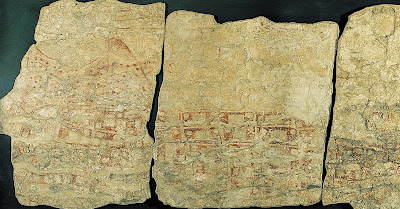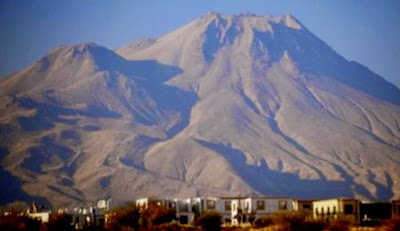 |
| The inhabitants of Catalhoyuk may have seen Hasan Dag erupt [Credit: Images and Stories/Alamy] |
If correct, the interpretation makes the mural the earliest depiction of a geological observation.
But not everyone agrees with Mellaart, partly because there was no evidence that Catalhoyuk's people saw Hasan Dag erupt, says Axel Schmitt, a volcanologist of the University of California in Los Angeles.
Now Schmitt and his colleagues have found that evidence, and are presenting their work at the Geological Society of America conference in Denver, Colorado today. They climbed Hasan Dag and collected samples from layers of pumice, a volcanic rock formed during an explosive eruption. By extracting zircon crystals from the pumice and using radiometric dating, they confirm that the rocks are about 9000 years old – roughly the same age as the mural.
 |
| Is it a volcano or is it leopard skin? Or is it both? [Credit: Images and Stories/Alamy] |
"It is encouraging to see that an eruption may have taken place at Hasan Dag within the time frame of the Catalhoyuk culture," says Haraldur Sigurdsson, a volcanologist at the University of Rhode Island, Narragansett. "I have all along been inclined to believe Mellaart's original interpretation – it is such a good story."
That is the problem, though, says Stephanie Meece, who studied the Catalhoyuk mural while at the University of Cambridge. She concluded that the "volcano" is in fact a depiction of a leopard skin, and the "town" beneath merely a collection of abstract shapes – which was, in fact, Mellaart's original impression.
 |
| Hasan Dag volcano in Turkey erupted 9,000 years ago. The blast is depicted in the oldest known painting of a volcanic eruption [Credit: Janet Harvey and Felix Wicke] |
Schmitt says the geological evidence is still important, and speculates on a possible compromise. "Zoomorphism could satisfy both interpretations," he says. "Hasan Dag could be seen as the 'leopard mountain'."

No comments:
Post a Comment